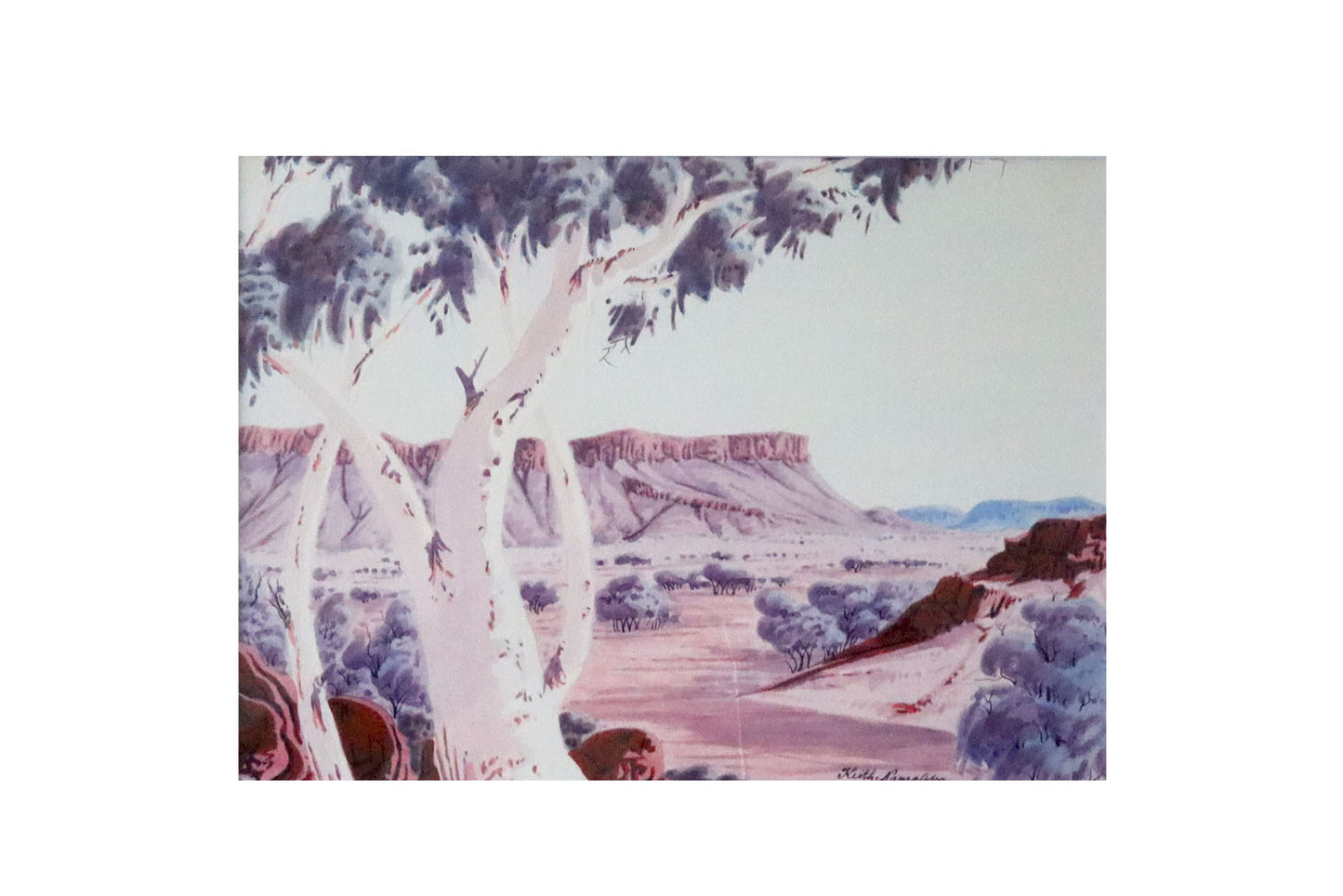
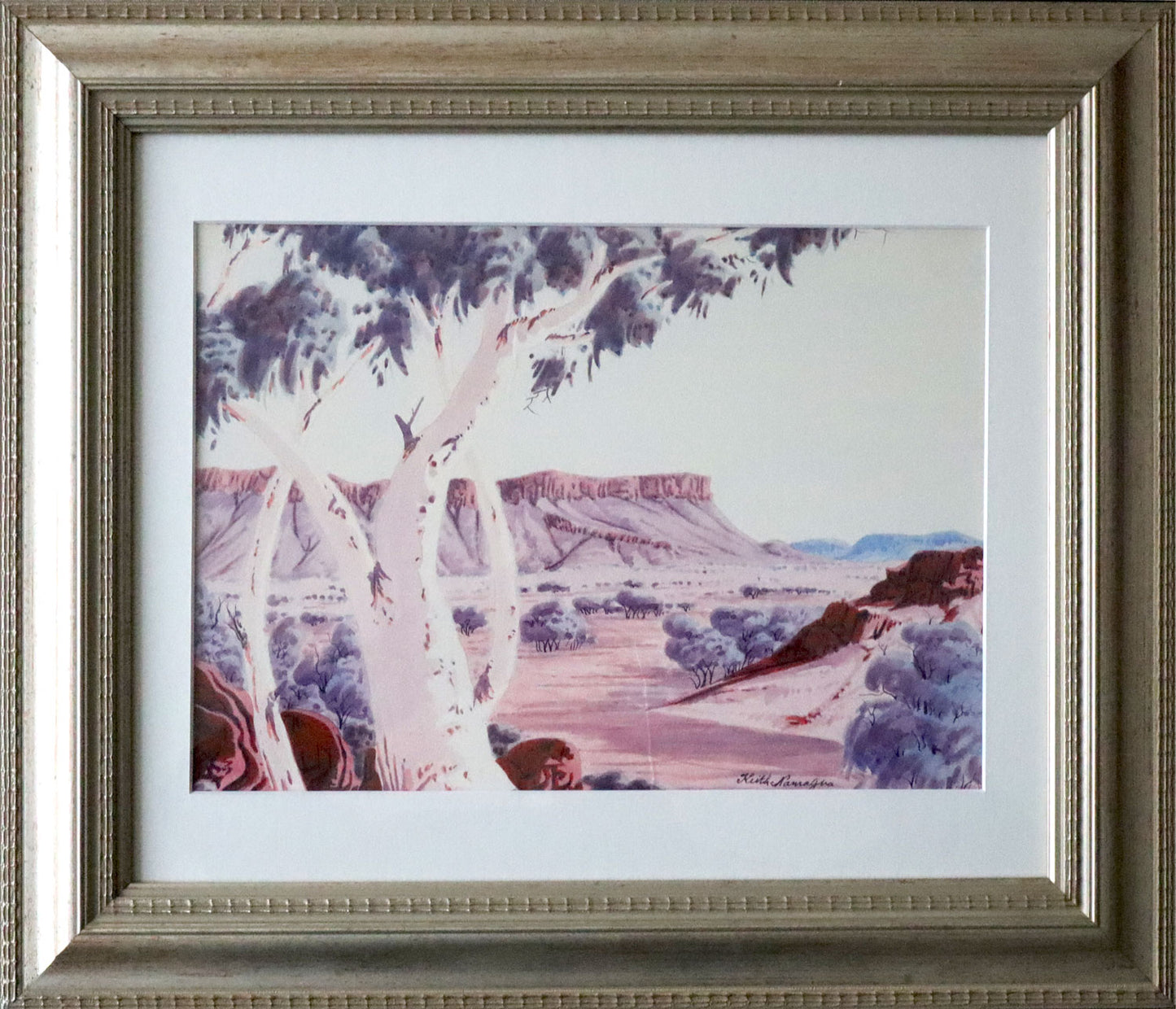
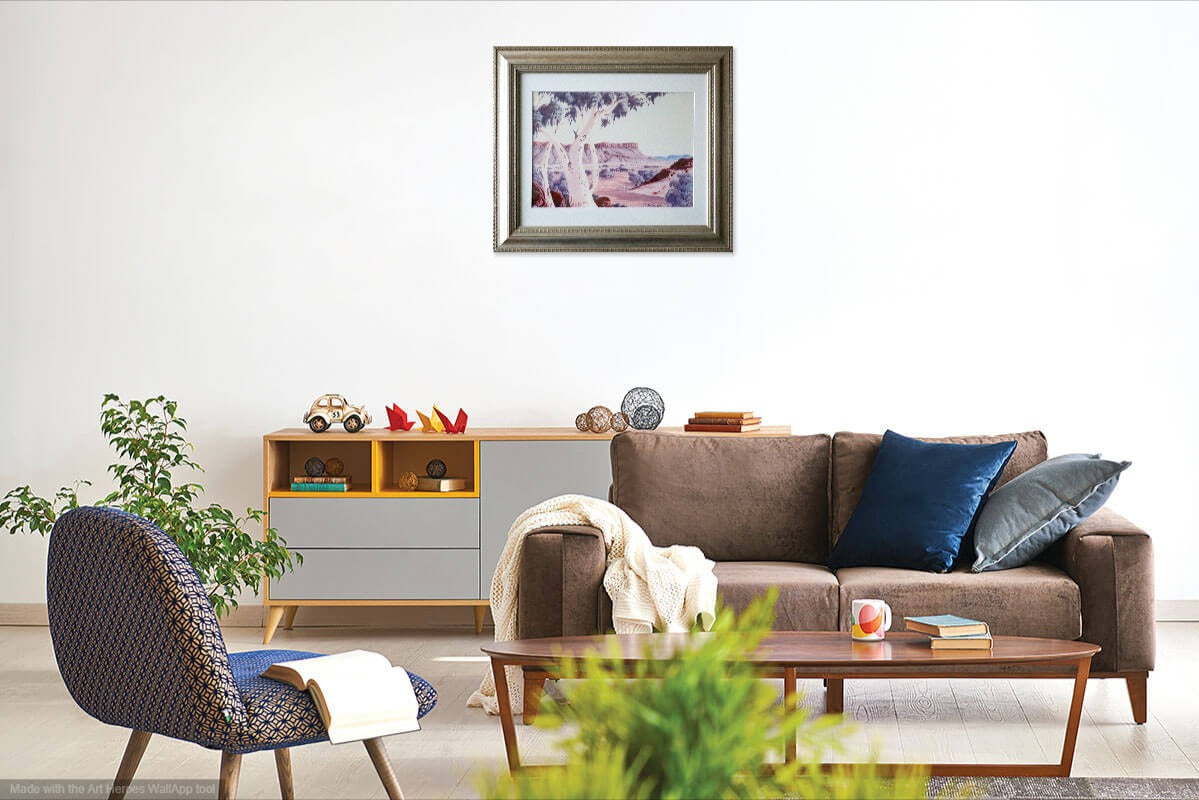
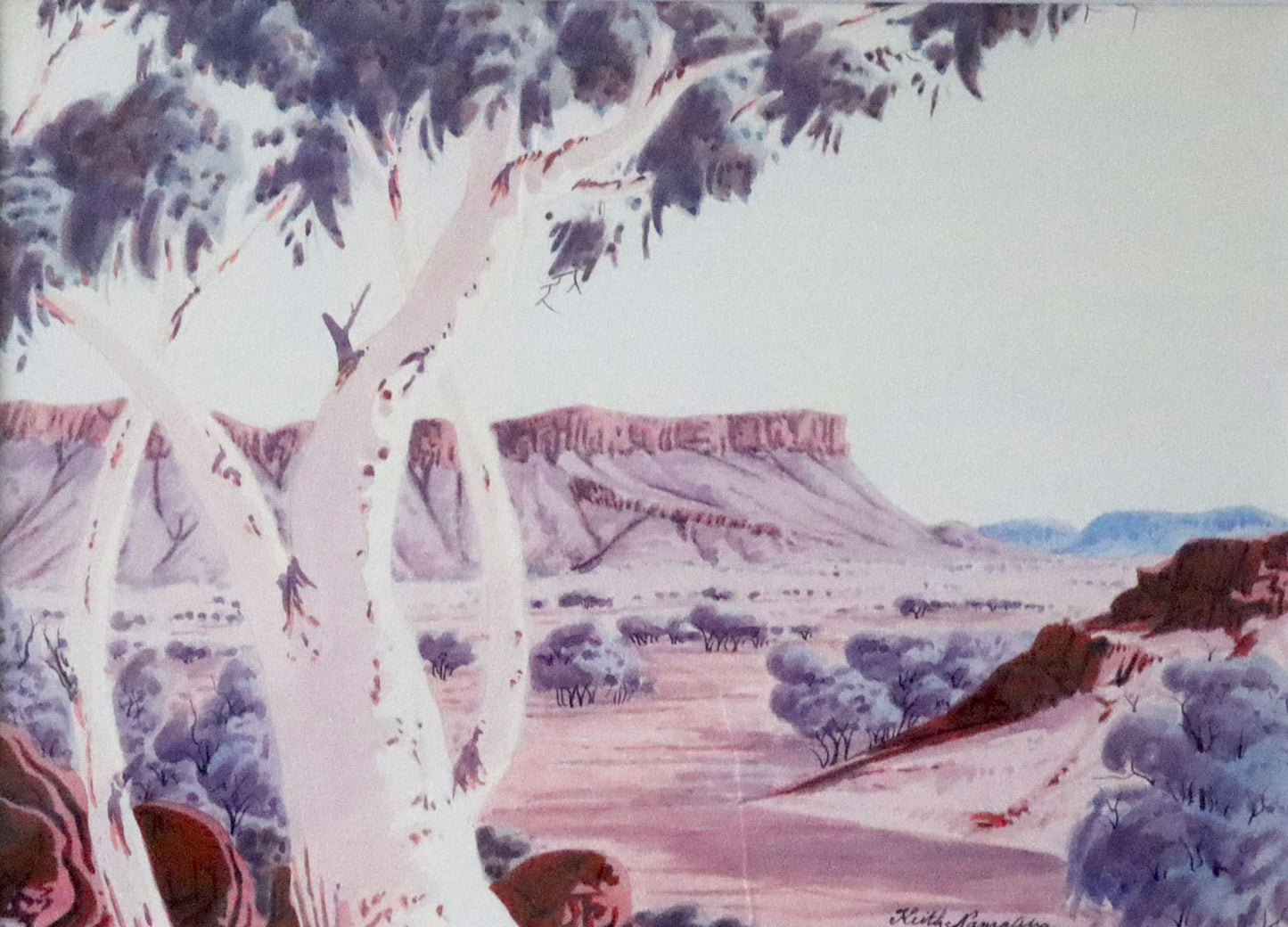
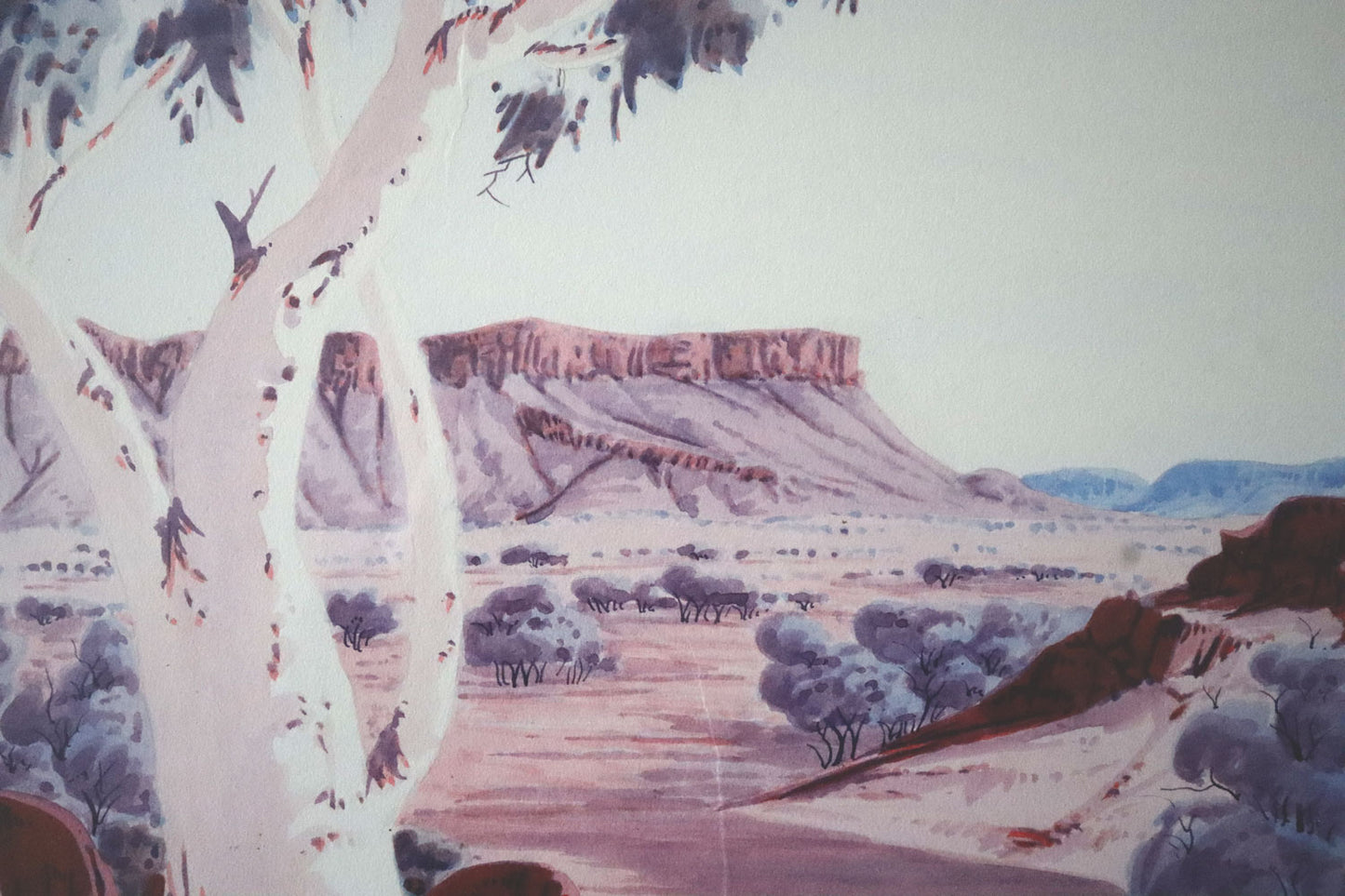
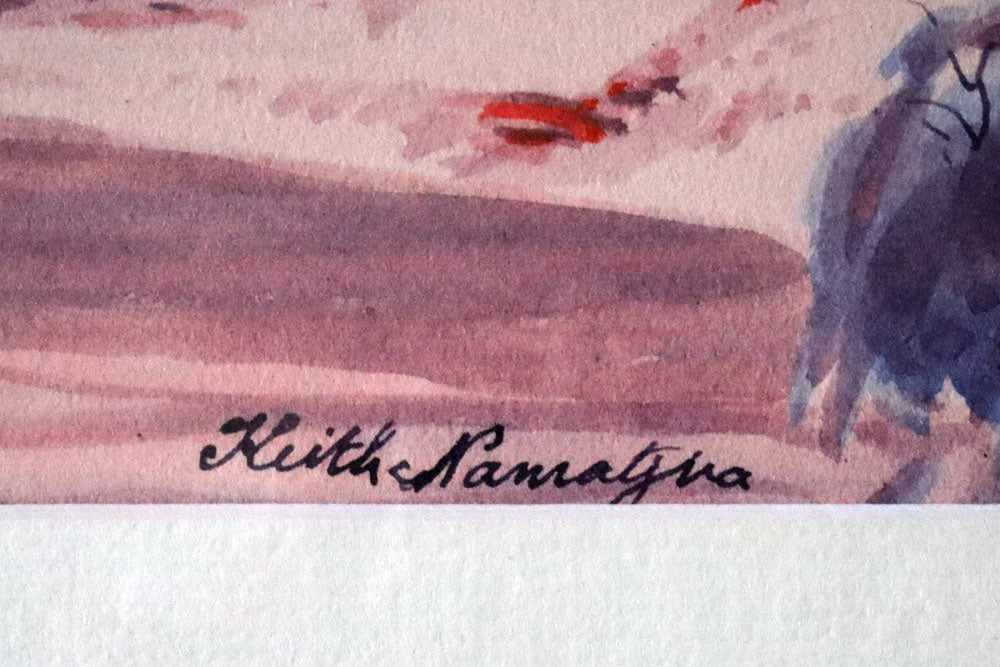
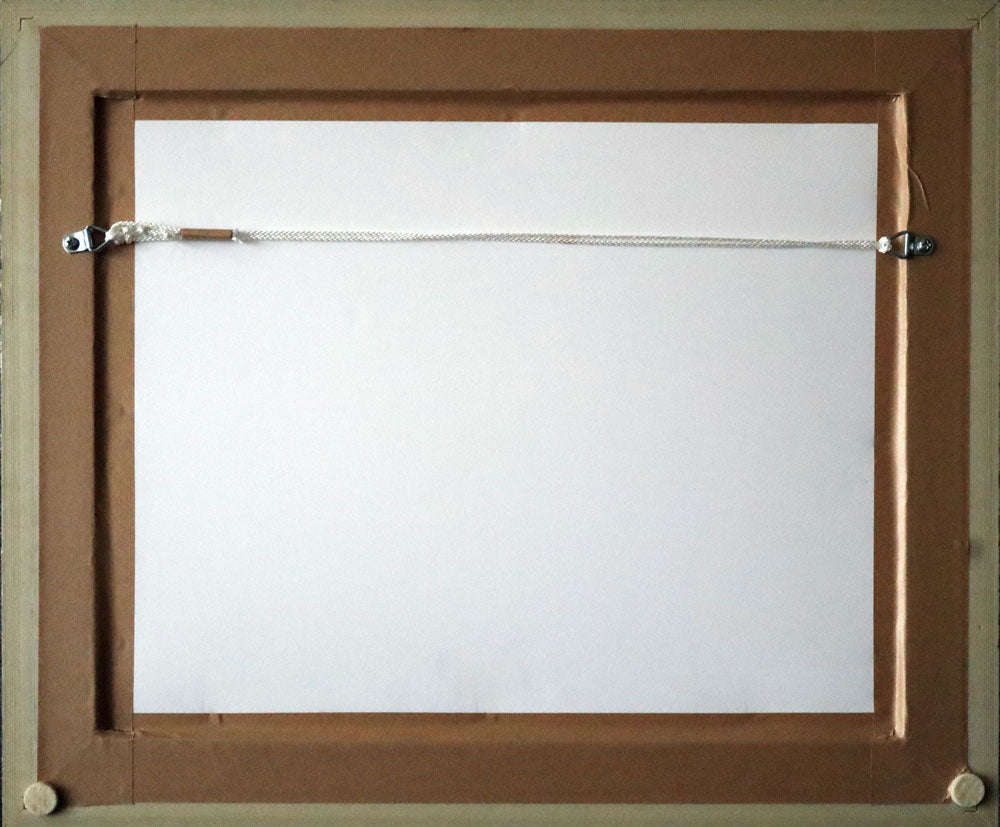

- description
- Delivery Information
Keith Namatjira, Hermannsburg (1938-1977), Ghost Gums, Watercolour on Paper 23.5cm x 33.5cm
Keith Namatjira, Hermannsburg (1938-1977). An original watercolour painting on paper 'untitled' featuring ghost gums and the MacDonnell Ranges in Central Australia Circa 1960. The artwork has been signed lower right 'Keith Namatjira' and is in excellent condition, along with the champagne gold frame with mat board and under glass. Provenance: Private collector NSW. A great investment piece!
Dimensions
Image size: 23.5cm x 33.5cm
Frame size: 43cm x 50cm
Bio
Keith Namatjira was sixteen when he accompanied his father, Albert Namatjira, to Canberra in early 1954 when Albert was presented to Queen Elizabeth II by Cabinet Minister Paul Hasluck. Two years later, in 1956, he accompanied his father to Sydney when they stayed at the home of film maker Frank Clune and his wife.
Keith was exposed intimately to the extremes of his father’s fame and honour in his formative teen years. Disaster struck when in 1958 and 1959 he was exposed to the distress of his father’s dramatic trial for supplying alcohol to an Aborigine, imprisonment at Papunya and death in Alice Springs hospital.
Minister Paul Hasluck insisted that if Albert was imprisoned, he would serve the term not behind bars in Alice Springs Prison, but in his own country in the open. Papunya was declared a prison for the purpose. Keith appears to have spent much of his time living in Papunya, which is in his mother Rubina Namatjira’s family’s country. However from 1959 Papunya was experiencing the upheaval of Pintupi incomers who had been forcibly removed from their traditional country out west and effectively dumped in this settlement being constructed for the enlarged population.
Somehow, Keith matured into a man of considerable intelligence, patience and sensitivity during these events. In this period he must have made some efforts to paint as he created an accomplished painting in 1959, his first known serious painting.
In his glorious painting of 1959 he honoured his father’s achievement in his father’s style. Then in the 1960s he turned to combining the aesthetics of the Hermannsburg School with traditional influences to suggest the sensation of place pictorially. From the late 1960s Keith gently showed a pathway between the view point, through the country portrayed, to the totemic site which was the subject of a composition. In another scene all parts of the country portrayed seem intimate and the viewer is welcome to enter. This correct pathway became more emphatic from 1972. In 1973, however, the viewer is not invited to a harsh scene.
Finally Keith reflected on a social and cultural dissonance between Hermannsburg and Papunya, perhaps himself and Papunya. He seems to have demonstrated and resolved that the Hermannsburg style in painting the appearance of the country is in itself a screening strategy. He was accordingly mindful of the subtle Hermannsburg style aesthetic gestures that show respect for totemic country, such as the token screening of a totemic hill at its base with small trees. Keith was of the Hermannsburg Mission culture, lived part of his life in his mother’s country of Papunya (albeit in the Mission’s distant area of influence), and lived and died in the town camp culture of Alice Springs. Keith was a respectful man and a realist.
Although he was not prolific in his short life, Keith was a master painter of the Hermannsburg School.
Although his mother Rubina was of the Kukatja people, Keith was raised mainly in the Western Arrernte culture of the Mission at Hermannsburg and the accompanying Hermannsburg School pictorial approach to landscape. Keith was a thoughtful, sensitive and important painter who gave some visual expression to his perceptions. His observations of the differences between the Hermannsburg and Papunya approaches seemed ‘matter of fact’ and not judgemental.
Keith’s 1959 painting is upbeat and in his father’s style. In the 1960s he asserted his own innovative approach when he decorated a composition at the Olgas with a traditional dot and line system. Until the mid-1970s his washes were clear and lemon was important. The late paintings include subdued, possibly downbeat, washes.
Figure 21.7 is particularly interesting because an upbeat Hermannsburg School style foreground sits in front of a muted but transparent Papunya approach, which includes dots partially masking the two important red hill tops, and entirely covering the hill bases (an exception in Hermannsburg art).
According to Geoffrey Bardon, Keith lived in Papunya at the time the Western Desert Painting movement commenced and had declined to join the traditional artists (apparently because he felt less traditional than the Papunya artists). It is touching that Kaapa Tjampitjinpa named his son ‘Keith’. They apparently knew each other with personal and respectful warmth. Keith was not a prolific painter and, sadly, died young.
Keith was born when his father Albert Namatjira was 35 years old and his mother Rubina was about 34 years old. Keith was Western Arrernte, Subsection (Skin) Peltharre. Keith married a Loritja woman, Lilly Namatjira Tjantjingu, born 1936. Lilly was the daughter of George Tjangala (Register of Wards Hermannsburg 1957 p 25).
Alice Springs town camps had attractions for the Hermannsburg artists. On 30 June 1966 Keith was at Number 2 Artists Camp Alice Springs. Keith was camped with Lindsay Ebatarinja (Imbarndarinja), Gabriel Namatjira, Benjamin Landara Ebatarinja, who was married to his sister Maisie. Keith’s wife and children were at Hermannsburg (as were the families of Gabriel and Benjamin. Keith died in Alice Springs.
Delivery Information
Australia
Shipping is based on size and weight. We have divided
shipping into under 7kg (Free), 7-15kg based on weight and size, +15kg
based on weight and size. We do not charge extra fees for shipping.
Purely what it costs us.
Standard Shipping
- Free Shipping up to 7kg
- Over 7kg Shipping Fee is based on location and weight
- Delivery time is 3-7 workdays after dispatch
Express Shipping
- Express Shipping Fee up to 7kg $14.95
- Over 7kg Shipping Fee is based on location and weight
- Delivery time is 2-5 workdays after dispatch
New Zealand
- Standard Free Shipping up to 7kg
- Over 7kg Shipping Fee is based on location and weight
- Delivery time is 7-10 Working Days
If you are interested in shipping products to another country, please contact us: info@artmarkets.com.au We will return a quote within 24 hours.
Terms and Conditions:
After receiving an international order, we will ship out the parcel within 1-2 business days and will send the tracking number to provided
email.
Our shipping partners are:
- Australia Post for orders within Australia
- DHL for international orders
- ArtMarkets.com.au does not refund international shipping costs and reserves the rights to deduct any return costs incurred from the total
return amount for orders that are refused at customs. - ArtMarkets.com.au are legally required to declare the full dollar value paid on the international shipments and must include an invoice for customs if they require it.
If you have any inquiries regarding delivery, please contact us.


















